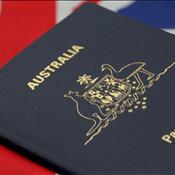
Millions of people around the world seek shelter toward’s other countries. Some people move to the next village, some leave their country altogether for a short time or sometimes for a longer period.
There are many underlying reasons why people leave their home town and seek to rebuild their lives among various countries of the world. Some people seek shelter in other countries to avoid persecution or conflict and violence. Others leave because they fear that will be targeted for their political opinions, religion, sexuality and ethnicity in their country. Get best services assistance for visa from Pakistan.
Many people leave their home country in hope of a better future and livelihood. Some people fall victim toward’s human trafficking, exploitation while some get detained by government officials as soon they arrive in a foreign country. Many people also face various issues of discrimination, racism and xenophobia.
Asylum seeker:
Persons who are seeking protection as they believe they will be targeted due to their ethnicity, nationality, political opinion, religion and face torture, persecution in their home country. People who have not been legally determined as a refugee and awaiting a decision for their asylum claim.
Refugee:
People who had to leave their country as they had little choice due to life threats and safety otherwise they would face persecution, torture and other human rights violations. They wish to seek refuge, better livelihood towards a better future because their home town government cannot prove safety and protection to them.
Canada Asylum Process:
People who wish to have asylum in Canada have to undergo a certain procedure.
The “immigration and refugee protection act” people who wish to enter Canada must
- Appear for examination at the port of entry to establish their right of entry
- Or become authorized to enter and remain in Canada
- The “Canada border service Agency” (CBSA) and “Royal Canadian Mounted Police” (RCMP) play important roles in keeping entry foreign entry check towards Canada.
-
CSBA is responsible for border security at entry points and inland.
Canada Refugee Claim:
- Individuals can make a refugee claim in Canada upon entry or online if they reside in Canada.
- “CBSA” or “IRCC” will determine if claimant is eligible to be referred to the immigration and refugee board for hearing
- Eligibility determining include claimant committed serious crime or made previous claim/receive protection in another country
- Asylum seekers make a refugee claim in Canada at the port of entry or online
- Governed in part by international treaties that Canada promise to uphold
-
Claimants must pass biographic and certain biometric test for proving their criminal free background.
Waiting time for Claimant:
- The IRB or immigration and refugee board of Canada will examine claims for asylum as during the proceeding of asylum, the claimant cannot be forced to leave the country.
- All refugees claimants will receive a fair hearing at IRB being an independent tribunal.
- Case decides based on the provided evidence, presented argument and merits.
- IRB considers claimant meets UN definition of Convention refugee or need of protection according to Canadian law
- UN defines Convention refugees as people having
- Fear of persecution based on political option, race, particular social group membership,
- Under the “immigration and refugee protection act” person is subjected to the danger of torture, life risk, punishment or unusual treatment if they returned to their home country. Book cheap tickets for Canada.
The person is determined eligible to make claim as a refugee he may have access to health service, emergency housing, legal aid, social assistance while their decision is pending. Most people eligible for refugee claims apply for a work permit if they have passed the medical examination.
IRB hearing takes place in the province where the individual made their claim. If the claimant wants to move to another province while waiting for their claim, they need to inform the IRCC, CBSA, IRB of their move and provide information about their new address. They would also need to inform they are leaving the province. A general decision normally takes about four months.
Claimant Refugee Decision:
Positive Decision
Claimants upon receiving positive decisions receive protected person status under federally funded settlement services. They can apply for permanent residency.
Negative Decision
If claimant is rejected by the Refugee Protection Division, the individual can appeal against the decision to the Refugee Appeal Division of IRB. If certain individual does not have the right to appeal they can consult the Federal court to review the applied decision.
In Canada Asylum Program:
The program caters to people who make claims from within Canada. The program is designed to address refugee protection towards people residing in Canada who cannot return to their home countries due to risk of being persecuted, punished or have life threats.
Claimant Eligibility requirements
Not all people are eligible for this refugee claim. People who have committed criminal offences or those who have been denied refugee claims by Canada cannot apply for claim. Applicant cannot apply for refuge if
- The person is granted conventional refuge
- The person has arrived via Canada –united states border
- The person has previously made a refugee claim
- Refugee and Humanitarian Resettlement Program
The applicant can make claims for refugee while outside of Canada country towards their Canadian embassy or Canadian visa office. The Canadian visa grant officer will decide whether the applicant fulfills the desired requirements of “Refugee and Humanitarian Resettlement program”. Claimant will fall in towards two refugee classes.
Convention Refugee Abroad Class:
Applicant has qualified as convention refugee but is in another country and cannot return to their home country due to fear of being persecuted due to
- Religion
- Nationality
- Race
- Member of special social group
-
Political opinion.
Country of Asylum Class:
Those persons are considered for this class if they are placed outside their home country and the immigration officer decides that the claimant has been seriously and continues to be affected by
- Armlet conflicts
- Civil war
-
Serious Human rights violations
Claimants who wish to apply must also be:
• Residing outside Canada
• Privately sponsored or recommended by United Nations National High Commissioner for Refugees.
• Have funds to support their dependents after their arrival in Canada.
USA Asylum Process:
There are essentially two basic ways by which person can get asylum in the US
- Affirmative process
-
Defensive process
Affirmative Process:
The person may apply for asylum through USCIS or U.S Citizenship and Immigration services. If the asylum officer does not approve the asylum applicant and the person does have have legal immigration status he is then referred towards immigration court for further proceedings, where the person can apply for a renewal request for asylum before presenting himself in front of immigration judge.
Defensive Asylum:
The person who wants asylum can do so through application along side immigration judge at the EOIR or Executive office for Immigration Review.
The person seeking asylum must generally apply through the process of defensive asylum. Both procedures require asylum seeker to be present in in the US.
It’s up to the person to prove that he or she fulfills the requirements of refugee through providing evidence through defensive or affirmative process. Persons must prove that they have fear of being persecuted in their homeland county.
US Asylum Eligibility:
Many people file for asylum every year due to fear of being persecution or suffering every year due to
- Nationality
- Social group member
- Religion
- Race
-
Ethnicity
UK Asylum Process:
People can claim asylum as they enter the UK by informing the Home Office. Otherwise, the people will have to explain the reason for not informing Home Office for asylum and produce evidence towards their claims of dander.Get best UK visa services from Pakistan.
People who do not inform Home Office after entering UK will have to register themselves for their asylum claim by making an appointment at the Croydon Screening Unit. The rule is the same for children and adults.
Screening Short Interview:
The person must give short interview that last from 30 minutes upto 2 hours. The person applying for asylum may be asked some important questions regarding his family and background.
The questions addresses the reasons for why the applicant is claiming asylum in the UK.The person claiming asylum if he has entered the UK at the port, the interview would be carried out there by concerned immigration officer.
ARC Asylum Card:
After the interview has been completed the asylum claimant will be provided “ARC card” indicating that person have provided asylum.
Asylum Substantive Interview:
Afterward the asylum claimant person will have to undergo certain “asylum substantive interview”. The interview will be detailed and person will be asked to provide details of the risk associated towards persecution or returning to Home County.
The waiting time period in between screening interview and claimant substantive interview can greatly vary and can range from several months or more.
The asylum claimant will have to submit supporting evidence towards Home Office after their “substantive interview”.
The UK Home Office will inform the asylum claimant of their decision afterwards. Usually the decision takes average of six months or move. If the asylum claimant is refused, he would have right to appeal in the courts.
Asylum Eligibility:
The person who wishes to seek asylum in the UK must fulfill requirements of refugee because of fear of persecution in their home country. Claimant fearing persecution due to
- Ethnicity
- Nationality
- Political opinion
- Social group
-
Sexual orientation
More Travel News
-
 22-Nov-2021Student Visa to Australia from Pakistan
22-Nov-2021Student Visa to Australia from Pakistan -
 14-Nov-2019Umrah on Installment
14-Nov-2019Umrah on Installment -
 05-Sep-2024CAA Issues New Guidelines to Resolve Passenger Boarding Challenges
05-Sep-2024CAA Issues New Guidelines to Resolve Passenger Boarding Challenges -
 08-Sep-2023Australia Reduces Student Visa Processing Time
08-Sep-2023Australia Reduces Student Visa Processing Time -
 24-Jan-2025Last Date for Entry into Saudi Arabia Announced for Umrah Pilgrims 2025
24-Jan-2025Last Date for Entry into Saudi Arabia Announced for Umrah Pilgrims 2025 -
 17-Sep-2024Will 2024 break last year record of highest number of Umrah pilgrims?
17-Sep-2024Will 2024 break last year record of highest number of Umrah pilgrims? -
 13-Oct-2021Best International Honeymoon Tour Packages for Couples from Pakistan 2021
13-Oct-2021Best International Honeymoon Tour Packages for Couples from Pakistan 2021 -
 07-Apr-2020A Brief Look At When Hajj Was Not Performed in History
07-Apr-2020A Brief Look At When Hajj Was Not Performed in History
